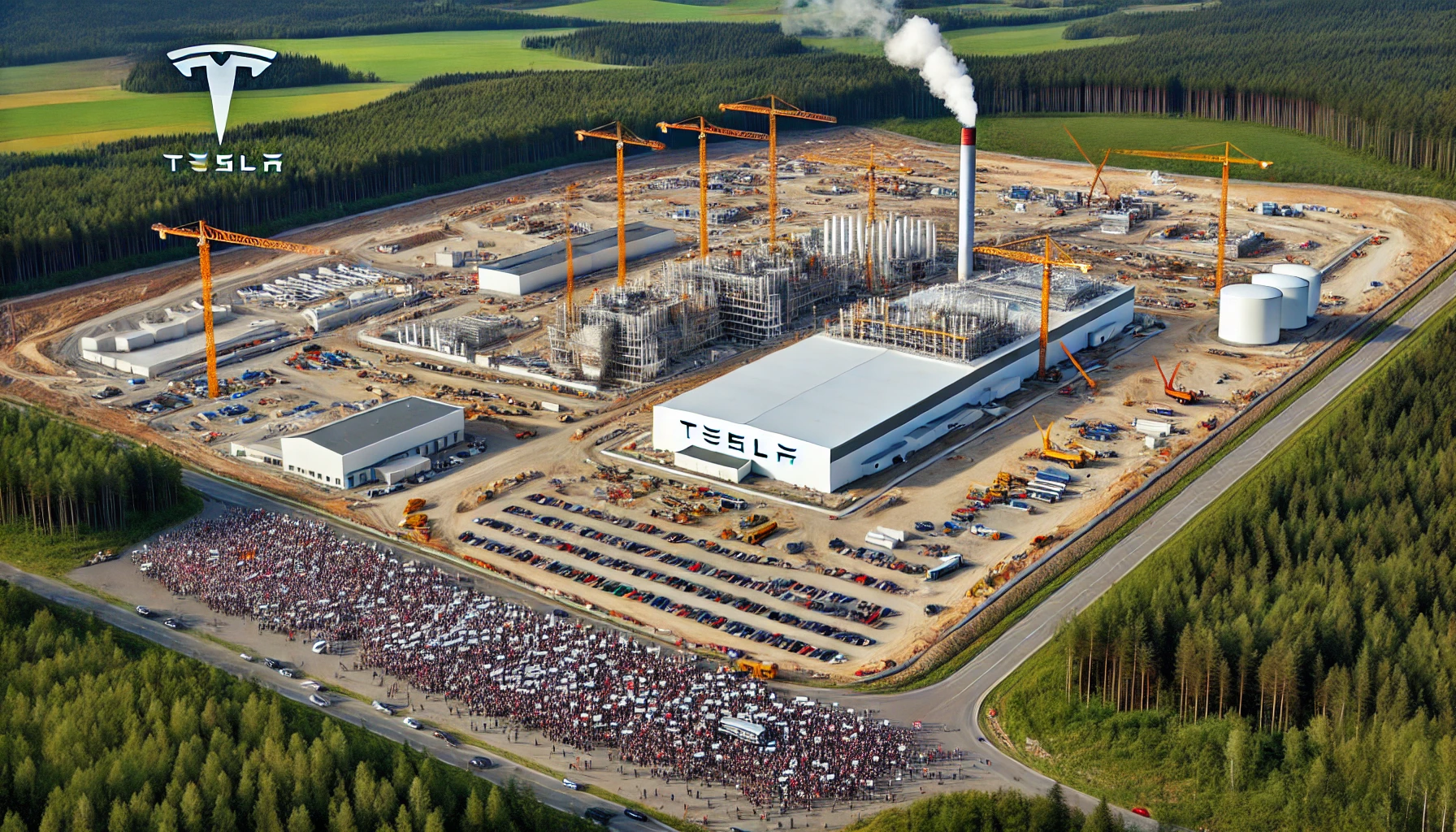Tesla is making significant strides in its expansion plans at the Gigafactory in Grünheide, Germany. The American electric vehicle (EV) giant aims to double its production capacity to one million cars annually and increase battery production to 100 gigawatt-hours per year (electrive.com) (DW). This ambitious project underscores Tesla’s commitment to meeting the burgeoning demand for EVs in Europe and advancing its mission of promoting sustainable transportation. However, the path to the Tesla Gigafactory Germany expansion is fraught with challenges and opposition.
Expansion Plans and Sustainability Efforts
The Tesla Gigafactory Germany expansion includes constructing new production facilities and upgrading existing ones. Key improvements focus on sustainability, such as advanced water recycling systems and enhanced waste treatment processes. These measures are designed to minimize the environmental footprint of the factory’s increased production capacity (electrive.com).
Tesla’s approach to obtaining permits has evolved, opting for a phased approval process to mitigate risks. This method stands in contrast to the company’s earlier strategy of proceeding with construction based on preliminary permits, which had the potential for costly dismantling if final approvals were not secured (electrive.com).
Opposition from Environmentalists and Local Residents
Despite Tesla’s efforts to address environmental concerns, the Tesla Grünheide factory expansion has met significant resistance from local residents and environmental groups. Critics are worried about the deforestation required for the new facilities, the impact on local water supplies, and the potential increase in traffic congestion (Tech Xplore). A local referendum saw over 60% of participants voting against the expansion, although this vote was not legally binding (Tech Xplore).
Protests have been ongoing, with activists occupying parts of the forest designated for expansion and organizing demonstrations. Annika Fuchs, a member of the Robin Hood environmental group, emphasized the importance of respecting local opinions and voiced concerns about the project’s environmental impact (Tech Xplore).
Challenges and Setbacks
In addition to local opposition, Tesla has faced other challenges, including a power outage earlier this year attributed to sabotage by a far-left group. This incident temporarily halted production and highlighted the complex and sometimes contentious nature of industrial expansion (Teslarati).
Economic and Strategic Importance
Despite these hurdles, the Grünheide Gigafactory remains crucial to Tesla’s strategy. Located just 30 kilometers from Berlin, the factory currently employs over 12,500 workers and plays a pivotal role in Tesla’s efforts to dominate the European EV market. The Tesla Gigafactory Germany expansion is expected to further solidify Tesla’s position, enabling the company to meet its ambitious global production targets and cater to the growing demand for EVs (DW).
Germany itself is a major player in the EV industry, ranking as the top EV producer in Europe and second globally, behind China. In 2023, German automakers produced around 1.27 million battery electric vehicles (BEVs) and plug-in hybrid electric vehicles (PHEVs), with a significant portion exported abroad (Electrek). This industrial prowess underscores the importance of the Tesla Grünheide factory expansion in maintaining its competitive edge in the global market.
Conclusion
The Tesla Gigafactory Germany expansion represents a significant step forward in the company’s mission to accelerate the transition to sustainable energy. However, balancing industrial growth with environmental stewardship remains a critical challenge. As Tesla navigates these complexities, the outcome of this expansion will likely have broader implications for the future of sustainable industrial development in Europe.





